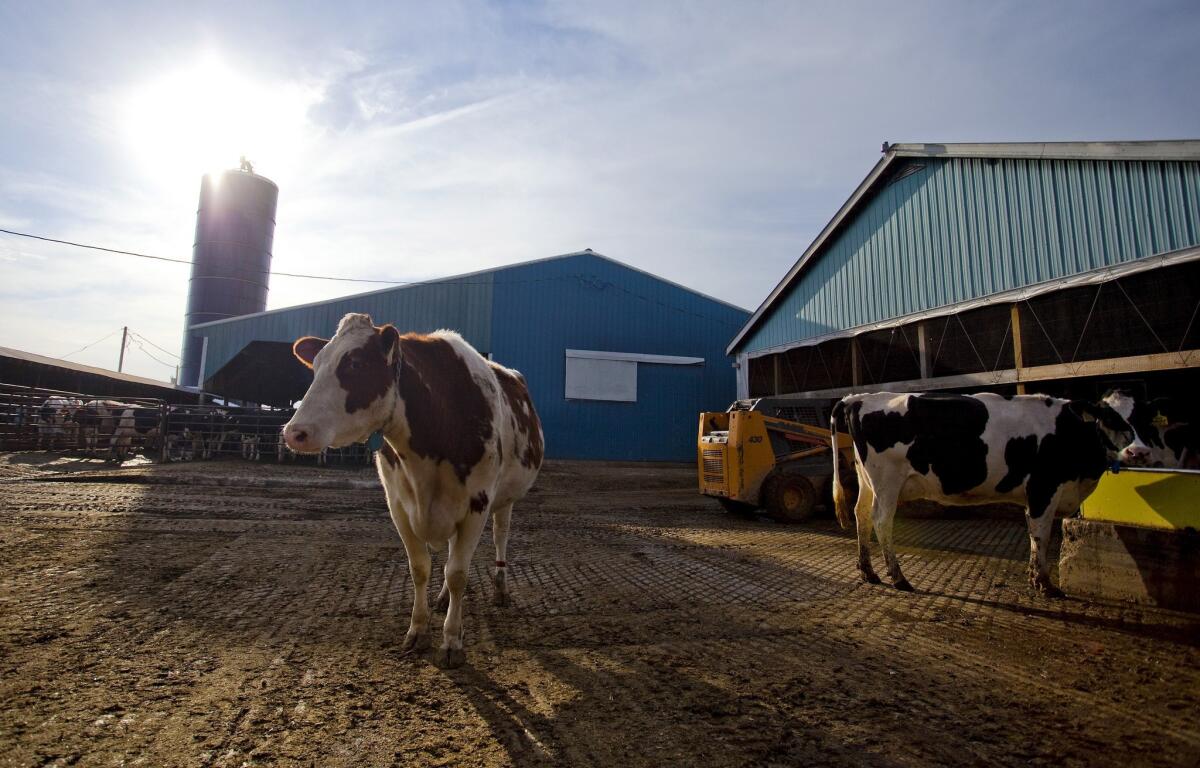Farm bill reforms: One step forward, two (or more) steps back

Maybe reforming federal farm subsidies is a task fit for Sisyphus.
Every five years or so, when the farm programs come up for reauthorization, fiscal conservatives and good-government types try to make the subsidies look less like corporate welfare and more like an industrial policy designed to preserve the food supply. The former hands out money to agribusinesses regardless of their size or need for help; the latter focuses aid on farmers whose resources are too thin to buffer them from the vicissitudes of weather and crop yields.
The current proposal, two years in the making, would dump one of the worst offenders from the aid lineup: the “direct aid” program that paid farmers based on their acreage, regardless of how much they grew or how well they fared. But it would use at least part of the money to expand the existing crop insurance program and create two new insurance mechanisms for protecting farmers from losses they suffer before their crop insurance kicks in.
It also would replace the current federal support program for milk producers, which pays dairies when the price of milk falls below a federal minimum, with a new, subsidized insurance program. Assuming the bill becomes law, the latter would let dairy farmers buy policies to protect against declining profits caused by higher feed prices and other expenses.
There’s nothing wrong with insurance per se, and the dairy approach appears to be a real improvement over the current policy. Where the corporate welfare comes in is with the premium subsidies, which in the case of the crop insurance programs are available to any farmer with an adjusted gross income of less than $900,000. The limit per farmer is $125,000, or $250,000 if you include a spouse. And there is, as yet, no effective mechanism to stop people who aren’t active farmers themselves -- e.g., people who merely rent out their land -- from collecting subsidies.
On average, taxpayers have covered 62% of the cost of the insurance premiums.
There’s also the issue of how the programs are designed. Should crop prices fall from their current, elevated levels, one of the new insurance plans could wind up costing more than the direct payments program that’s slated for elimination, some critics say.
I wouldn’t for a minute suggest that farming is easy or less risky than many other businesses. It’s a tough life, and we as a country have a clear interest in making sure that farmland isn’t taken out of production as its owners pursue easier lifestyles. But the latest farm bill continues Congress’ long tradition of refusing to tie aid to need. Instead, subsidies are just part of the business of farming, another input to factor into the calculations about how to run a successful operation.
That’s what drives free-market reformers crazy, and it’s why the sponsors’ summary of the conference report runs 186 pages. Its hard for the government to intervene just a little bit in a market; every measure begets other measures, until you wind up with a crazy-quilt of federal rules that influence a whole range of decisions made by farmers, including such fundamental ones as what crops to plant and how much of their acreage to put to use.
It’s worth noting that the vast majority of the cost of farm bills has been their nutrition programs, namely food stamps (a.k.a. the Supplemental Nutrition Assistance Program). The House had proposed to cut $39 billion in food stamp spending over 10 years, or about 5% of the roughly $750 billion in projected spending, by making fewer people eligible for the aid. The Senate had proposed much more modest changes that would have cut spending by $4 billion over 10 years.
The compromise version cuts about $8.5 billion by tightening a rule that makes people automatically eligible for food stamps if they receive aid for their utility bills. Critics say that some states had gamed the provision, giving people de minimus amounts of aid that they didn’t need for utilities in order to qualify them for food stamps and bring in more federal dollars. The new version also increases spending on food banks and other emergency food aid by about $300 million over 10 years, and spends about $250 million launching a pilot program aimed at getting people off food stamps and into jobs.
The changes don’t seem to satisfy anyone; conservatives wanted to bar food stamps to people with more than $2,000 in savings or a car worth more than $5,000, and liberals don’t like even the small changes made to eligibility. So perhaps the same criticism about reform could be levied against the nutrition side of the bill as the food production side.
The Senate could send negotiators back to the table by voting against the bill Monday, or President Obama could veto it. But considering how hard it was for lawmakers even to take the small steps they’re taking, it’s more likely that reformers will have to wait five years to start rolling the boulder back up that hill.
ALSO:
Another misguided GOP attack on Obamacare
Don’t let ‘Mitt’ fool you into regretting your vote for Obama
Hey ‘Bette,’ you can buy insurance outside an Obamacare exchange
Follow Jon Healey on Twitter @jcahealey and Google+
More to Read
A cure for the common opinion
Get thought-provoking perspectives with our weekly newsletter.
You may occasionally receive promotional content from the Los Angeles Times.







